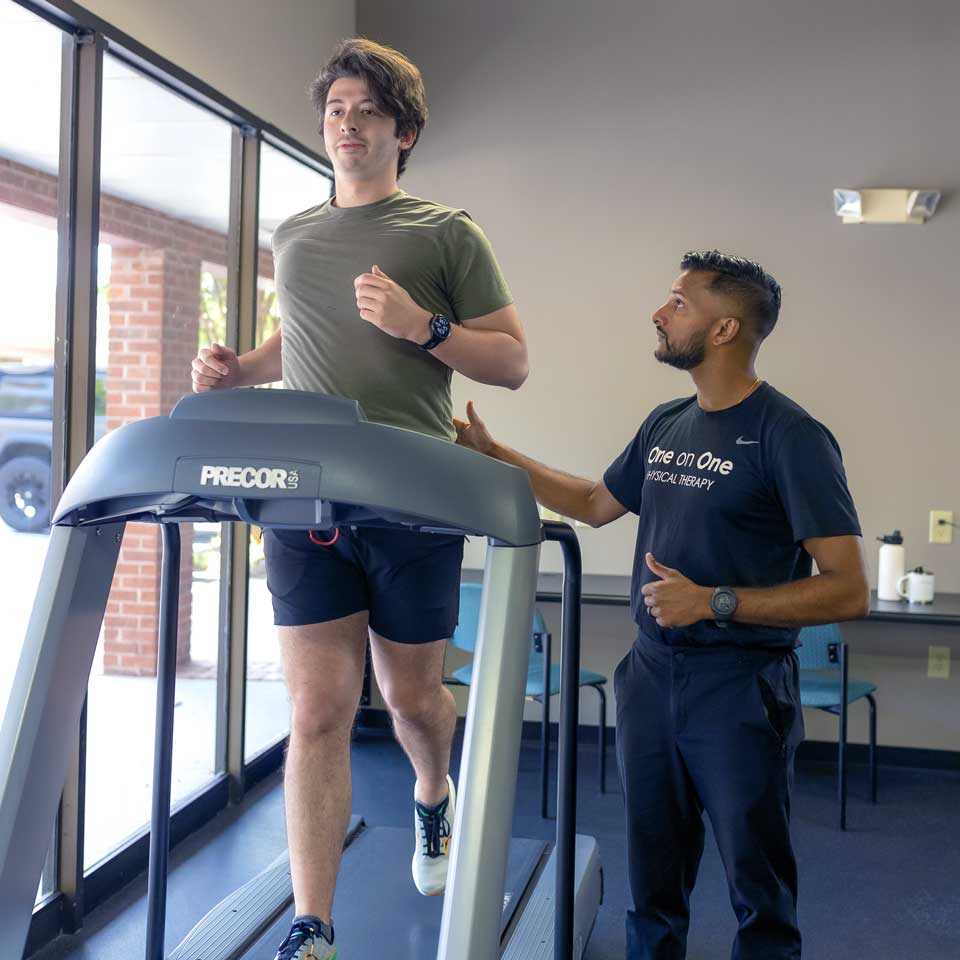Optimize Your Performance with Running Analysis
What is Running Analysis?
Running analysis, also known as gait analysis, is a comprehensive examination of how you move. It involves the study of locomotion, body mechanics, and muscle activity to identify abnormalities and improve movement efficiency. By optimizing your gait, you can enhance performance and reduce the risk of injury.
- Systematic Study: Evaluates body movements, mechanics, and muscle activity to detect inefficiencies.
- Injury Prevention: Identifies biomechanical problems to prevent injuries caused by imbalances or structural issues.
- Improved Performance: Enhances body movement to maximize running efficiency and athletic performance.
At One on One Physical Therapy, our running analysis services are designed to help athletes, runners, and individuals optimize their movement patterns for better performance and reduced risk of injury.

The Importance of Efficient Movement
Efficient movement is crucial for avoiding injuries. Biomechanical problems can force the body to compensate, leading to imbalances and abnormalities. These issues often stem from muscular imbalances, such as tight muscles working against weak ones. Structural problems, like leg length discrepancies, can also contribute to these imbalances.
- Muscular Imbalances: Tight muscles opposing weak muscles can cause biomechanical issues.
- Structural Problems: Conditions like leg length discrepancies can lead to hip hiking and other compensations.
- Compensation Effects: The body compensates for inefficiencies, leading to further biomechanical abnormalities.
Our running analysis aims to identify these issues early, allowing us to recommend corrective strategies that enhance your overall movement quality.
Understanding the Gait Cycle
The gait cycle is the continuous, repetitive pattern of walking or running. It begins when one foot contacts the ground and ends when that same foot contacts the ground again.
Gait Phases for Walking:
Stance Phase:
Swing Phase:
Gait Phases for Running:
In running, the swing phase dominates, and the stance phase shortens as speed increases. Understanding these phases helps us tailor strategies to improve your movement patterns.
